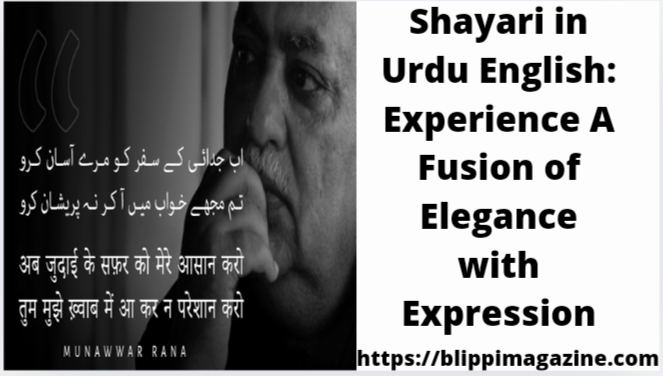introduction
Shayari in Urdu English the art of lyrical expression has long been a cornerstone of South Asian culture notably in Urdu With its poetic appeal and profound emotional resonance Urdu Shayari has enthralled audiences for generations But what happens when this literary heritage meets the worldwide attraction of the English language? The outcome is a compelling combination that communicates to a varied audience transcending cultural and language borders
The Beauty of Urdu Shayari
Urdu Shayari is a tribute to the richness of the Urdu language, known for its beautiful tone and dense vocabulary. It blends themes of love, sorrow, spirituality, and life’s fleeting nature into lyrics that are both deep and approachable. Iconic poets like Mirza Ghalib, Allama Iqbal, and Faiz Ahmed Faiz have immortalized this art form with their timeless masterpieces.
Urdu Shayari is generally filled with metaphors and imagery, producing vivid images in the reader’s head. For instance, the beloved is equated to the moon, while grief is typically characterized as a stormy night. The brilliance of Urdu Shayari resides in its capacity to communicate complex emotions with simple but striking phrases.
English Meets Shayari
As globalization has overcome divides between civilizations, the fusion of Urdu and English in Shayari has grown more popular. This combination enables poets to experiment with language while keeping the spirit of traditional Shayari.
For instance, a lyric like: “Dil ke armaan ashkon mein beh gaye, Humein pyar ke sapne dekhne ki saza mili.”
may be translated and modified into English as: “Dreams of love dissolved in tears, For daring to dream, I paid the price.”
Such versions introduce the beauty of Urdu Shayari to non-Urdu-speaking audiences, making it more accessible. The fusion generally keeps the rhythm and emotional depth of the original while providing a modern twist.
The Growing Popularity of Bilingual Shayari
The emergence of social media sites like Instagram, Twitter, and YouTube has given a new lease of life to Shayari. Many emerging poets now write multilingual Shayari, blending Urdu and English in unique ways. This hybrid form appeals with younger viewers who are equally comfortable in both languages.
For example: “Kya khabar thi ke tum yun chhod doge, I thought our love would last forever.”
This smooth transition between Urdu and English conveys the present identity of a globalized youth while preserving the heritage of lyrical expression.
Why Shayari Matters Today
In a society driven by quick communication, Shayari gives a respite. It fosters introspection, enabling individuals to dive into their feelings and describe what often seems inexpressible. Urdu Shayari, in particular, creates a feeling of nostalgia and connection to tradition, even for people living distant from South Asia.
English, on the other hand, provides universality. By adding English into Shayari, poets increase their reach, ensuring this art form continues to survive in the digital era.
How to Write Shayari in Urdu and English
Creating Shayari in Urdu and English demands a mastery of both languages’ intricacies and poetic frameworks. Here are some tips:
- Start with a Theme: Love, sorrow, nature, or philosophy are frequent topics. Choose one that resonates with you.
- Use Simple Language: While Urdu Shayari sometimes contains complicated language, the bilingual version benefits from simplicity to maintain intelligibility.
- Experiment with Rhyme and Rhythm: Whether it’s a ghazal or free poetry, maintain a flow that seems natural.
- Incorporate Imagery: Use metaphors and similes to generate vivid images.
- Blend Seamlessly: Let Urdu and English compliment each other. Avoid abrupt shifts that could break the emotional flow.
Conclusion
Shayari in Urdu and English is more than simply poetry; it’s a cultural bridge. It blends the traditional with the modern, the local with the global. Whether you’re a seasoned poet or someone who likes reading, this union provides unlimited opportunities for creativity and connection.
In commemorating this art form, we remember the past while embracing the future, illustrating that Shayari, like emotions, has no bounds.



